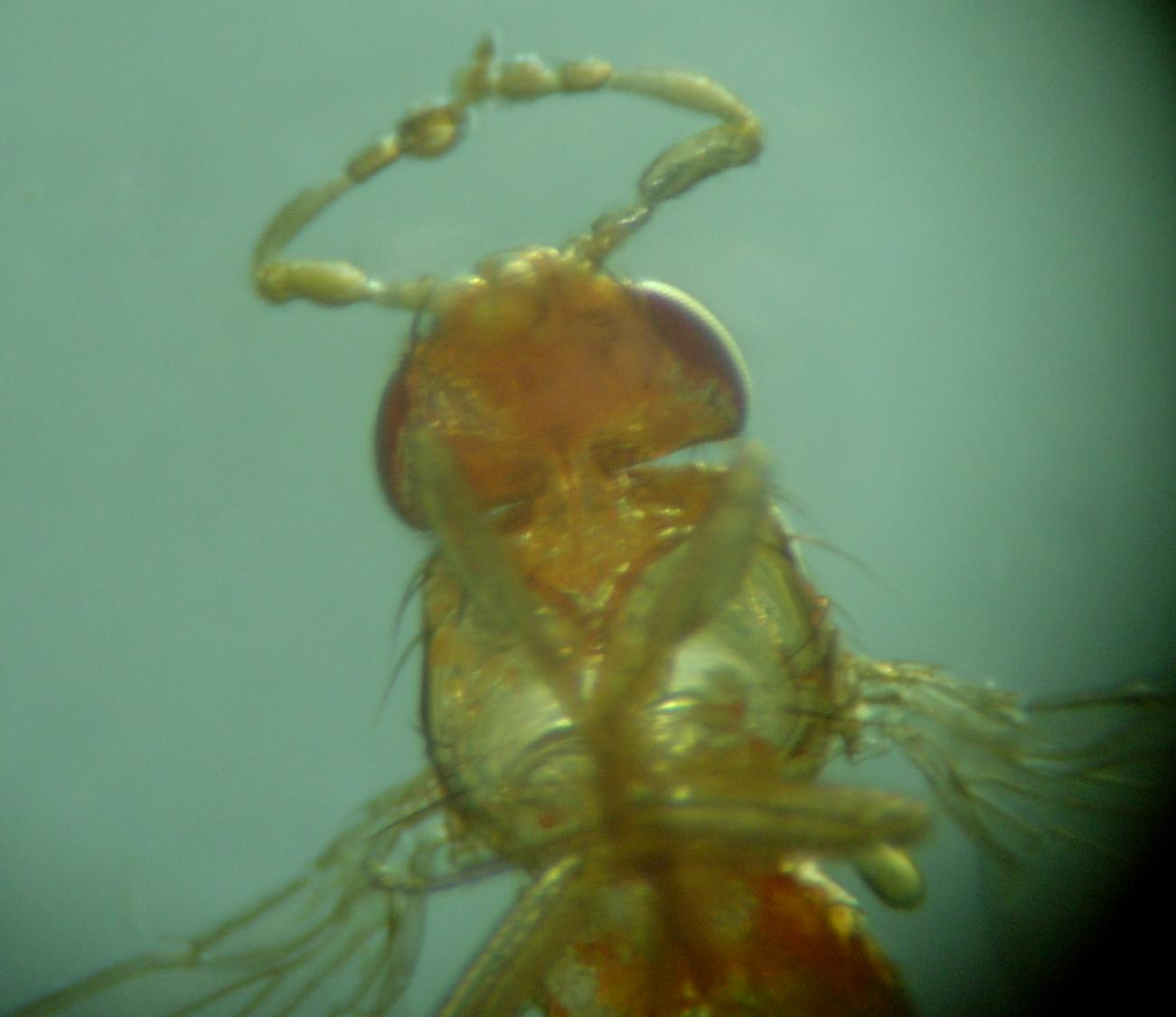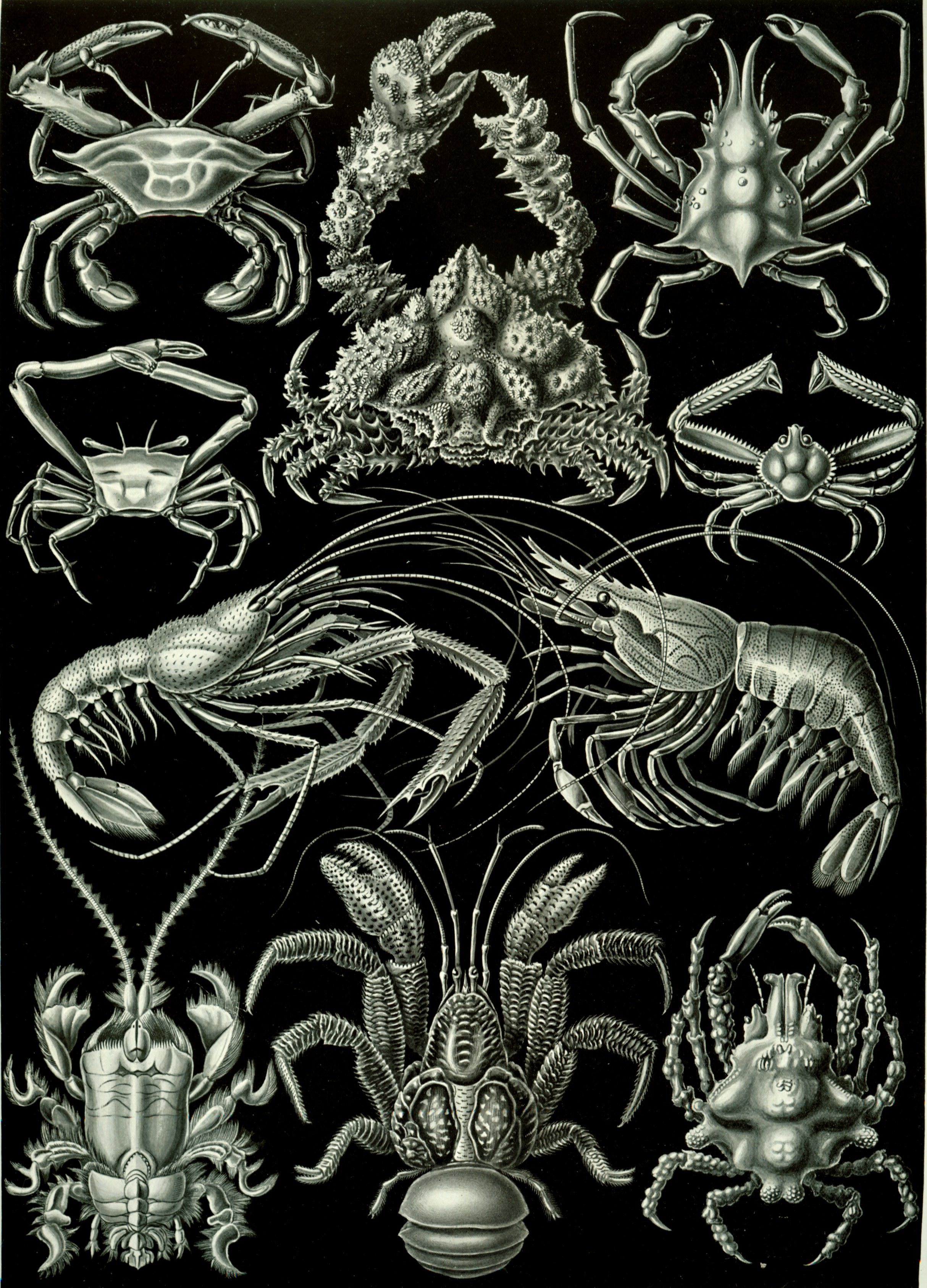|
Heteromorphosis
Heteromorphosis (//, //) ( – other; morphe – form) refers to situations where an organ or tissue is different from the expected,"Biology Encyclopedic Dictionary. "Ch. Ed. MS Gilyarov; Editorial Board: AA Babayev, GG Winberg, GA Zavarzin and others. – 2nd ed., Corrected. – M.: Sov. Encyclopedia of 1986. either because of (embryonic) development anomalies, or after reparative regeneration following a trauma.Yew. A. Filipchenko – Experimental Zoology; Ripol Klassik 2013; , , pp. 209, 221–223, 344 The difference include an abnormal location, or an abnormal shape.Brockhaus and Efron Encyclopedic Dictionary It should not be confused with homeosis, which means big change in tissue structure of an organ. Heteromorphosis is an example of the imperfection of some manifestations of the regenerative capacity. Jacques Loeb offered this term in 1892, then he was in experiments of distortion of polarity of hydroids. Many organisms from protozoans to the chordate may have heteromorpho ... [...More Info...] [...Related Items...] OR: [Wikipedia] [Google] [Baidu] |
Jacques Loeb
Jacques Loeb (; ; April 7, 1859 – February 11, 1924) was a German-born American physiologist and biologist. Biography Jacques Loeb, born Itzak, firstborn son of a Jewish family from the German Eifel region, was educated at the universities of Berlin, Munich, and Strasburg (M.D. 1884). He took postgraduate courses at the universities of Strasburg and Berlin, and in 1886 became assistant at the physiological institute of the University of Würzburg, remaining there until 1888. In a similar capacity, he then went to Strasburg University. During his vacations he pursued biological research, at Kiel in 1888, and at Naples in 1889 and 1890. Loeb first arrived in the United States in 1891 when he accepted a position at Bryn Mawr College. The College, however, provided insufficient facilities for his work, leading to his resignation. In 1892, he was called to the University of Chicago as assistant professor of physiology and experimental biology, becoming associate professor in 1895, ... [...More Info...] [...Related Items...] OR: [Wikipedia] [Google] [Baidu] |
Regeneration (biology)
Regeneration in biology is the process of renewal, restoration, and tissue growth that makes genomes, cell (biology), cells, organisms, and ecosystems Resilience (ecology), resilient to natural fluctuations or events that cause disturbance or damage. Every species is capable of regeneration, from bacteria to humans. Regeneration can either be complete where the new tissue is the same as the lost tissue, or incomplete after which the necrotic tissue becomes Fibrosis, fibrotic. At its most elementary level, regeneration is mediated by the molecular processes of gene regulation and involves the cellular processes of cell proliferation, morphogenesis and cell differentiation. Regeneration in biology, however, mainly refers to the Morphogenesis, morphogenic processes that characterize the phenotypic plasticity of Phenotypic trait, traits allowing multi-cellular organisms to repair and maintain the integrity of their physiological and morphological states. Above the genetic level, rege ... [...More Info...] [...Related Items...] OR: [Wikipedia] [Google] [Baidu] |
Major Trauma
Major trauma is any injury that has the potential to cause prolonged disability or death. There are many causes of major trauma, blunt and penetrating, including falls, motor vehicle collisions, stabbing wounds, and gunshot wounds. Depending on the severity of injury, quickness of management, and transportation to an appropriate medical facility (called a trauma center) may be necessary to prevent loss of life or limb. The initial assessment is critical, and involves a physical evaluation and also may include the use of imaging tools to determine the types of injuries accurately and to formulate a course of treatment. In 2002, unintentional and intentional injuries were the fifth and seventh leading causes of deaths worldwide, accounting for 6.23% and 2.84% of all deaths. For research purposes the definition often is based on an Injury Severity Score (ISS) of greater than 15. Classification Injuries generally are classified by either severity, the location of damage, or ... [...More Info...] [...Related Items...] OR: [Wikipedia] [Google] [Baidu] |
Brockhaus And Efron Encyclopedic Dictionary
The ''Brockhaus and Efron Encyclopaedic Dictionary'' (35 volumes, small; 86 volumes, large) is a comprehensive multi-volume encyclopaedia in Russian. It contains 121,240 articles, 7,800 images, and 235 maps. It was published in the Russian Empire in 1890–1907, as a joint venture of Leipzig and St Petersburg publishers. The articles were written by the prominent Russian scholars of the period, such as Dmitri Mendeleev and Vladimir Solovyov. Reprints have appeared following the dissolution of the Soviet Union. History In 1889, the owner of a printing house in St. Petersburg, , at the initiative of Semyon Afanasyevich Vengerov, entered into an agreement with the German publishing house F. A. Brockhaus for the translation into Russian of the large German encyclopaedic dictionary ''Meyers Konversations-Lexikon''. Initially, it was supposed to be limited to the translation of this publication, but only with a more detailed presentation of issues related to Russia. It was ... [...More Info...] [...Related Items...] OR: [Wikipedia] [Google] [Baidu] |
Homeosis
In evolutionary developmental biology, homeosis is the transformation of one organ into another, arising from mutation in or misexpression of certain developmentally critical genes, specifically homeotic genes. In animals, these developmental genes specifically control the development of organs on their anteroposterior axis. In plants, however, the developmental genes affected by homeosis may control anything from the development of a stamen or petals to the development of chlorophyll. Homeosis may be caused by mutations in Hox genes, found in animals, or others such as the MADS-box family in plants. Homeosis is a characteristic that has helped insects become as successful and diverse as they are. Homeotic mutations work by changing segment identity during development. For example, the ''Ultrabithorax'' genotype gives a phenotype wherein metathoracic and first abdominal segments become mesothoracic segments. Another well-known example is '' Antennapedia'': a gain-of-function al ... [...More Info...] [...Related Items...] OR: [Wikipedia] [Google] [Baidu] |
Hydroids
Hydroids are a life stage for most animals of the class Hydrozoa, small predators related to jellyfish. Some hydroids such as the freshwater '' Hydra'' are solitary, with the polyp attached directly to the substrate. When these produce buds, they become detached and grow on as new individuals. The majority of hydroids are colonial. The original polyp is anchored to a solid substrate and forms a bud which remains attached to its parent. This in turn buds and in this way a stem is formed. The arrangement of polyps and the branching of the stem is characteristic of the species. Some species have the polyps budding directly off the stolon which roots the colony. The polyps are connected by epidermis which surrounds a gastrovascular cavity. The epidermis secretes a chitinous skeleton which supports the stem and in some hydroids, the skeleton extends into a cup shape surrounding the polyp. Most of the polyps are gastrozooids or feeding polyps, but some are specialised reproduc ... [...More Info...] [...Related Items...] OR: [Wikipedia] [Google] [Baidu] |
Earthworm
An earthworm is a soil-dwelling terrestrial invertebrate that belongs to the phylum Annelida. The term is the common name for the largest members of the class (or subclass, depending on the author) Oligochaeta. In classical systems, they were in the order of Opisthopora since the male pores opened posterior to the female pores, although the internal male segments are anterior to the female. Theoretical cladistic studies have placed them in the suborder Lumbricina of the order Haplotaxida, but this may change. Other slang names for earthworms include "dew-worm", "rainworm", "nightcrawler", and "angleworm" (from its use as angling hookbaits). Larger terrestrial earthworms are also called megadriles (which translates to "big worms") as opposed to the microdriles ("small worms") in the semiaquatic families Tubificidae, Lumbricidae and Enchytraeidae. The megadriles are characterized by a distinct clitellum (more extensive than that of microdriles) and a vascular system ... [...More Info...] [...Related Items...] OR: [Wikipedia] [Google] [Baidu] |
Actinia
''Actinia'' is a genus of sea anemones in the family Actiniidae. Actinia display a rare form of heteromorphosis in which a cut inflicted on a specimen can develop into a second mouth. Species The following 63 species are listed in the World Register of Marine Species (WoRMS): *'' Actinia alba'' Risso, 1826 *'' Actinia annulata'' Gay, 1854 *'' Actinia aster'' Ellis, 1768 *'' Actinia australiensis'' Carlgren, 1950 *'' Actinia bermudensis'' (McMurrich, 1889) *''Actinia bicornis'' Müller, 1776 *'' Actinia capillata'' Gay, 1854 *''Actinia cari'' Delle Chiaje, 1822 *'' Actinia chlorodactyla'' Brandt, 1835 *''Actinia cinerea'' Gay, 1854 *'' Actinia cleopatrae'' Hemprich & Ehrenberg, 1834 *''Actinia curta'' Drayton in Dana, 1846 *'' Actinia delicatula'' (Hertwig, 1888) *''Actinia dubia'' Lesson, 1830 *''Actinia ebhayiensis'' Schama, Mitchell & Solé-Cava, 2011 *''Actinia equina'' Linnaeus, 1758 *''Actinia erythrospilota'' Brandt, 1835 *''Actinia fiscella'' Müller, 1789 *''Actinia fraga ... [...More Info...] [...Related Items...] OR: [Wikipedia] [Google] [Baidu] |
Decapods
The Decapoda or decapods, from Ancient Greek δεκάς (''dekás''), meaning "ten", and πούς (''poús''), meaning "foot", is a large order (biology), order of crustaceans within the class Malacostraca, and includes crabs, lobsters, crayfish, Caridea, shrimp, and Dendrobranchiata, prawns. Most decapods are scavengers. The order is estimated to contain nearly 15,000 extant species in around 2,700 genera, with around 3,300 fossil species. Nearly half of these species are crabs, with the shrimp (about 3,000 species) and Anomura including hermit crabs, king crabs, porcelain crabs, squat lobsters (about 2500 species) making up the bulk of the remainder. The earliest fossils of the group date to the Devonian. Anatomy Decapods can have as many as 38 appendages, arranged in one pair per body segment. As the name Decapoda (from the Greek language, Greek , ', "ten", and , '':wikt:-pod, -pod'', "foot") implies, ten of these appendages are considered legs. They are the pereiopods, foun ... [...More Info...] [...Related Items...] OR: [Wikipedia] [Google] [Baidu] |
Antenna (biology)
An antenna (plural: antennae) is one of a pair of appendages used for Sensory system, sensing in arthropods. Antennae are sometimes referred to as ''feelers''. Antennae are connected to the first one or two Segmentation (biology), segments of the arthropod head. They vary widely in form but are always made of one or more jointed segments. While they are typically sensory organs, the exact nature of what they sense and how they sense it is not the same in all groups. Functions may variously include sensing tactition, touch, air motion, heat, vibration (sound), and especially insect olfaction, smell or gustation, taste. Antennae are sometimes modified for other purposes, such as mating, brooding, swimming, and even anchoring the arthropod to a substrate (biology), substrate. Larval arthropods have antennae that differ from those of the adult. Many crustaceans, for example, have free-swimming larvae that use their antennae for swimming. Antennae can also locate other group members i ... [...More Info...] [...Related Items...] OR: [Wikipedia] [Google] [Baidu] |
Epimorphosis
Epimorphosis is defined as the regeneration of a specific part of an organism in a way that involves extensive cell proliferation of somatic stem cells, dedifferentiation, and reformation, as well as blastema formation. Epimorphosis can be considered a simple model for development, though it only occurs in tissues surrounding the site of injury rather than occurring system-wide. Epimorphosis restores the anatomy of the organism and the original polarity that existed before the destruction of the tissue and/or a structure of the organism. Epimorphosis regeneration can be observed in both vertebrates and invertebrates such as the common examples: salamanders, annelids, and planarians. History Thomas Hunt Morgan, an evolutionary biologist who also worked with embryology, argued that limb and tissue reformation bore many similarities to embryonic development. Building off of the work of German embryologist Wilhelm Roux, who suggested regeneration was two cooperative but distinct p ... [...More Info...] [...Related Items...] OR: [Wikipedia] [Google] [Baidu] |





